New Tech for Island Restoration: Sentinel Camera Traps
We're using a cutting-edge new tool to sense and detect animals in remote locations. Find out how!
Our new online shop is live!
Published on
July 5, 2017
Written by
Aaron
Photo credit
Aaron
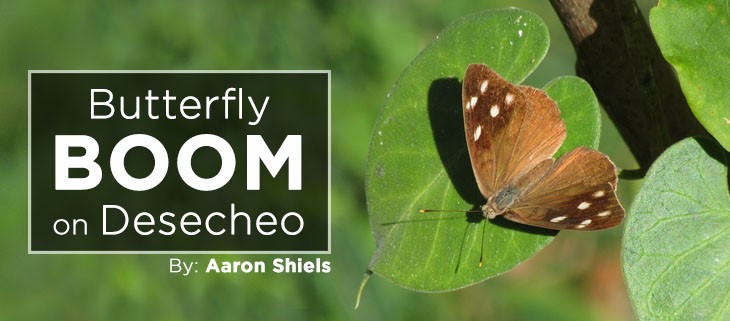
Just this week the announcement came out about the successful removal of invasive rats from Desecheo National Wildlife Refuge (NWR), Puerto Rico. Removal of invasive species from islands presents an incredible opportunity for native ecosystem recovery, and this 10-year project was no exception. On our most recent visit to Desecheo NWR, a particularly exciting sign of change was apparent: a population explosion of an uncommon butterfly.
The Dingy Purplewing Butterfly (Eunica monima; Lepidoptera) appeared in massive abundance across the island, but only on the dominant tree species, Almacigo (Bursera simaruba; Burseraceae). We estimated hundreds to thousands of individual caterpillars on a single tree! These caterpillars were munching away at the leaves of Almacigo to the point that whole trees were defoliated. It was a bit concerning to see the dominant dry forest tree without leaves and we all hoped that they would survive this outbreak (we learned in later months that they did survive and recover). What impressed us the most as we trekked through the dry forest of Desecheo during this outbreak was that we could hear the sound of falling frass (insect poop) as it hit the leaf litter below—this should remind us all that even though these are small organisms, they can make up for their size in high abundances, and such events can produce whole forest or landscape change.

This was an unusual occurrence indeed! This butterfly had not been previously recorded on Desecheo Island, despite insect surveys from 1914 to 1971; it was even considered rare on the nearby Mona Island and the main island of Puerto Rico. Its native range includes the Caribbean and South and Central America, but it is only considered common in northern South America. Why did it show up now? Well, we are not sure, but we have some ideas. Yes, everyone wants to pin all new occurrences in Earth’s ecosystem to climate change, and we’ll get back to that, but it’s not our first suspicion. A distinctive possibility is that the removal of invasive rats from Desecheo Island caused the butterfly population to rapidly expand.
Why did it show up now? Well, we are not sure, but we have some ideas.
We know that invasive rats, which were recently eliminated from Desecheo NWR to restore the native ecosystem (particularly seabirds and plants), consume insects and particularly fat, slow-moving, high protein items like caterpillars—in other words the immature (larval) stage of a moth or butterfly. So, rats could have been suppressing the Dingy Purplewing Butterfly on Desecheo, and rat removal could have caused a release from rat predation, thereby resulting in a thriving population of this butterfly. The timeline for such release from rat predation fits well with what we observed and the timeline of the butterfly’s life-history.
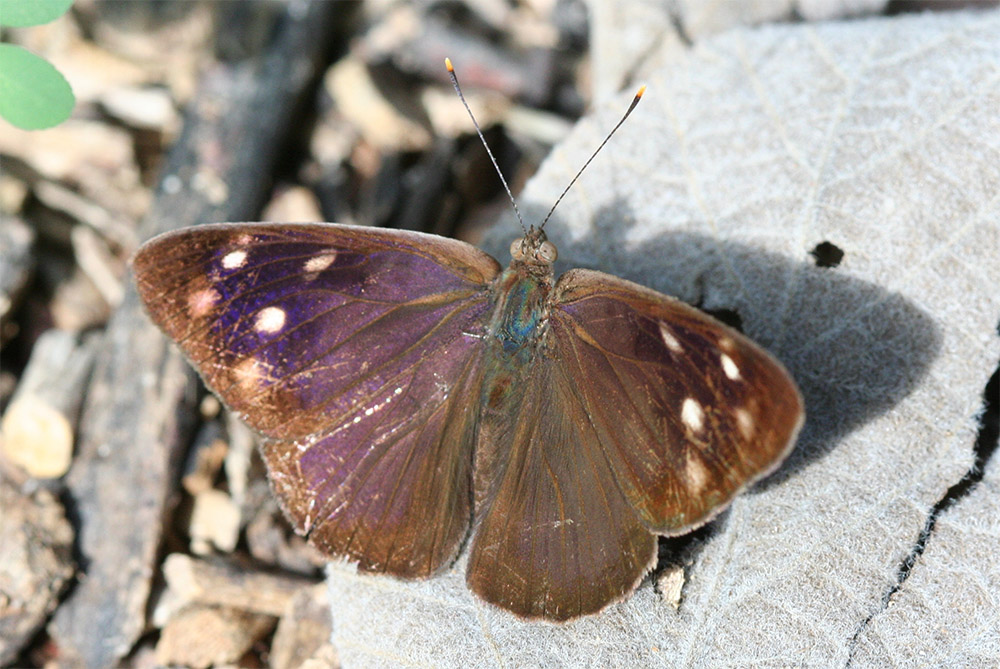
When we execute large-scale removals of invasive rats from island ecosystems, we expect that insects and other rat-vulnerable organisms with short life-histories will respond first to the rat removal process. Rats eat most available food items—plants and animals. However, plants and vertebrates such as seabirds, forest birds, and lizards have offspring less frequently than insects and grow from juvenile to adult stages much more slowly than insects. Thus, some of the first evidence of the negative impacts of invasive rats on ecosystems, as well as signs of recovery produced by invasive rat eradication from islands, is often observed in the insect community. But, of course, insects are not always very noticeable, and people are more likely to be interested in birds and plants than insects, so changes in insect populations following rat eradication may go unnoticed!
Some of the first evidence of the negative impacts of invasive rats…is often observed in the insect community.
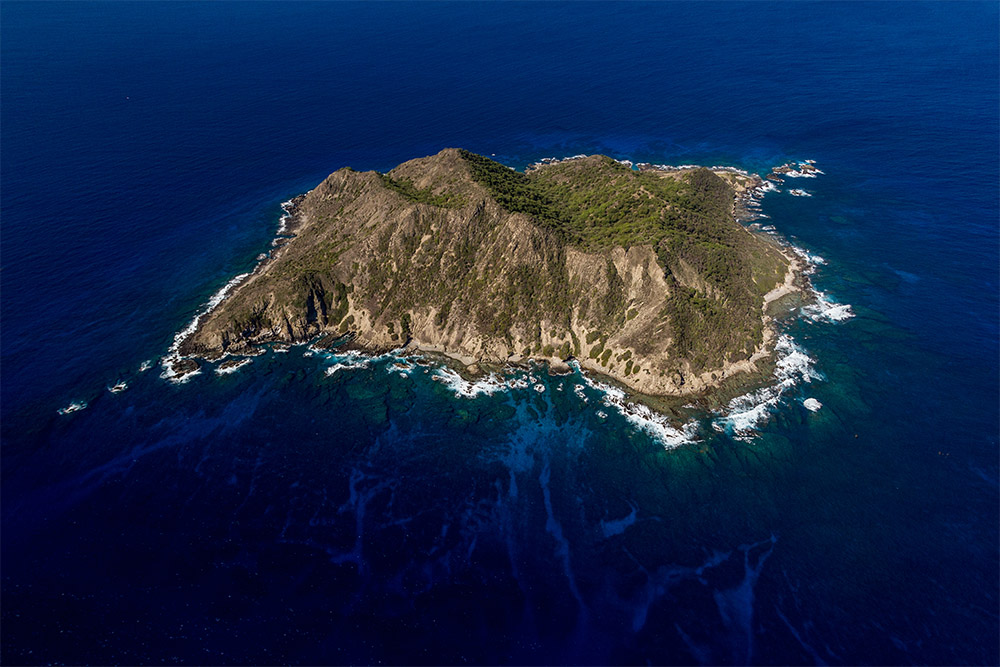
There are alternative explanations for the explosion of Dingy Purplewing Butterflies on Desecheo. The explosion may have been a result of non-predator environmental factors (i.e., the right rainfall and temperatures caused the outbreak, and it was just happenstance with the timing of the rat eradication). Much of Puerto Rico was in severe drought during the latter half of 2015, and a day of heavy rain (3.1 cm) on Desecheo in late February and noticeable Almacigo leaf flush and overall canopy greening were documented just prior to the outbreak. Additionally, a month after the butterfly outbreak on Desecheo, there was a large outbreak of a similar butterfly (Eunica tatila) in south and western Puerto Rico. Thus, it could have been the climate-change driven drought followed by substantial rains that triggered the butterfly outbreaks on Desecheo and the main island of Puerto Rico.
At this time, we cannot determine which of these two scenarios (or additional ones) caused the Dingy Purplewing outbreak on Desecheo. This uncertainty is one of the reasons that science, and trying to understand how the world works, is so fascinating. In fact, one of the greatest challenges in insect ecology is to determine the causes of population outbreaks; such causes are particularly difficult to identify on isolated islands where entomological and ecological surveys are infrequent or difficult to conduct. Perhaps you, or someone you know, can help solve this mystery!
Featured photo: Dingy Purplewing Butterfly. Credit: Beatrice Laporte
Check out other journal entries we think you might be interested in.
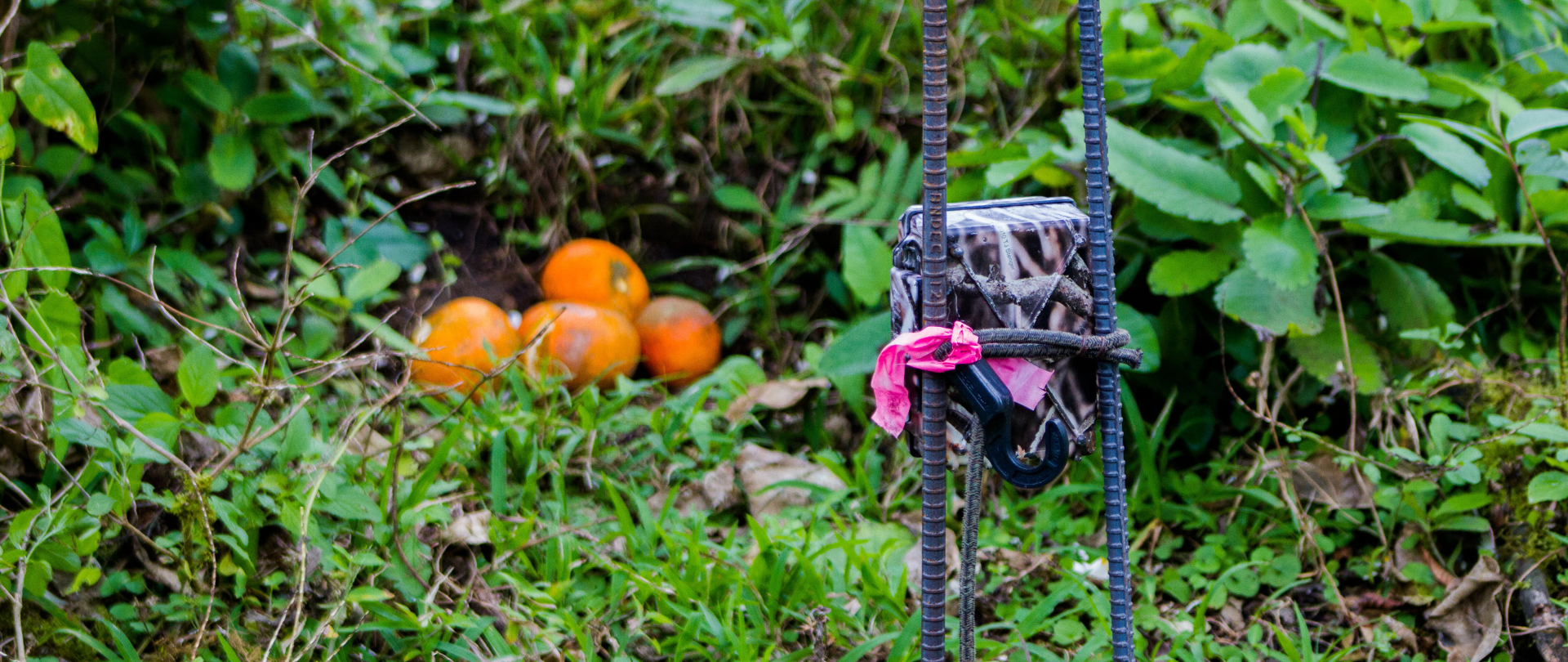
We're using a cutting-edge new tool to sense and detect animals in remote locations. Find out how!
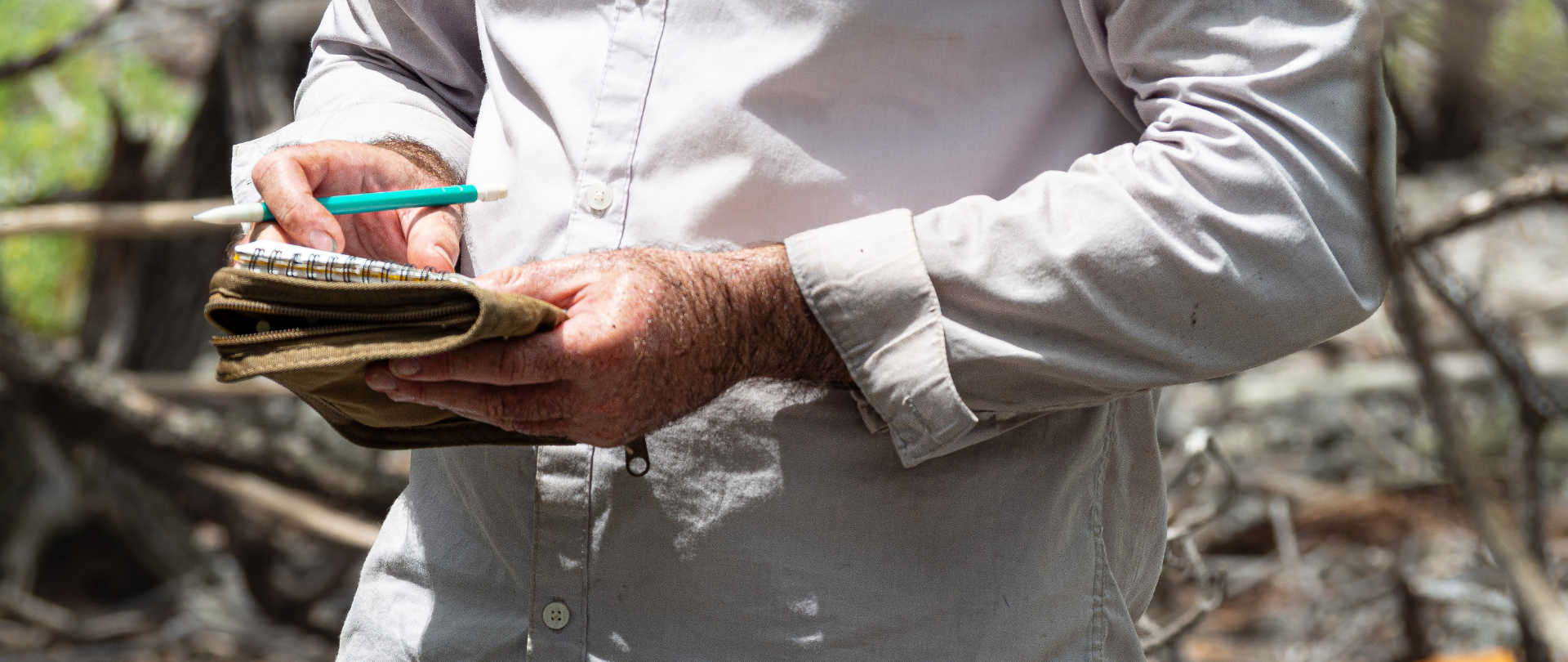
Groundbreaking research has the potential to transform the way we monitor invasive species on islands!
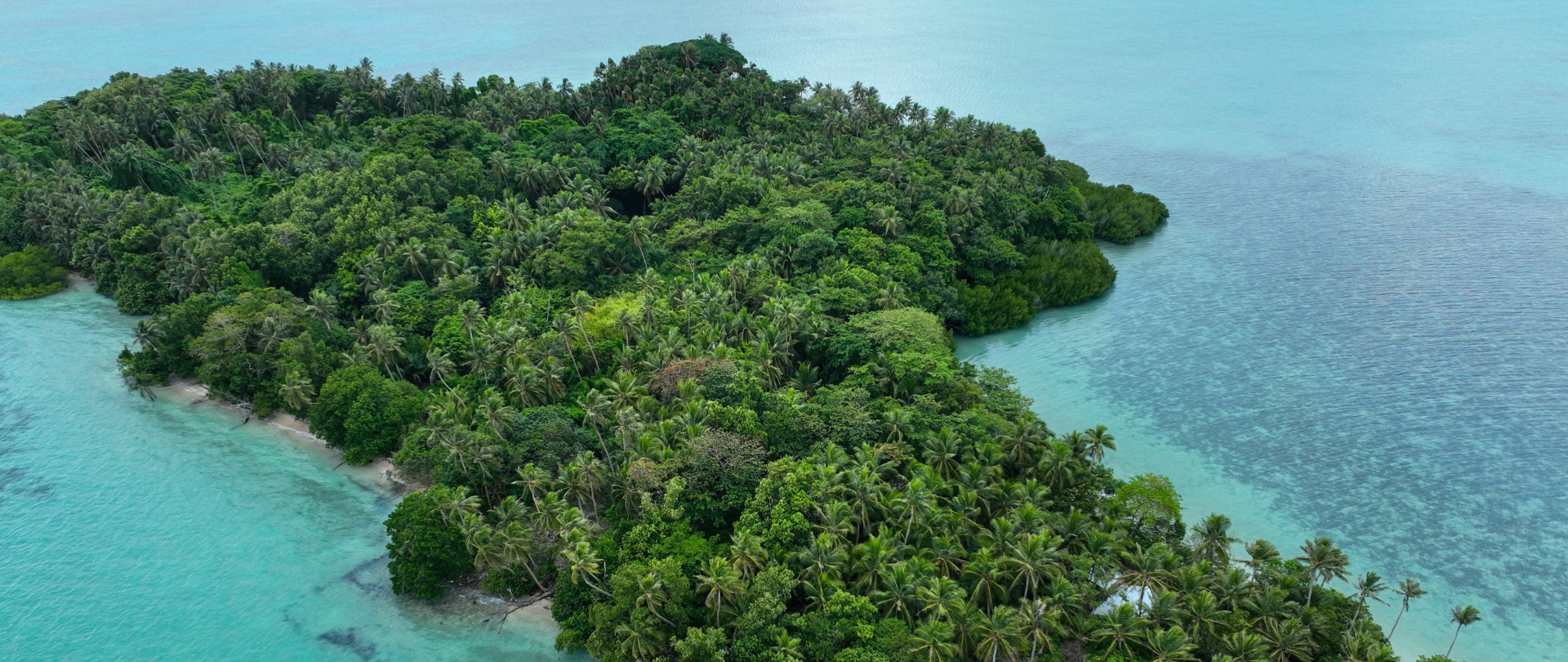
Ann Singeo, founder of our partner organization the Ebiil Society, shares her vision for a thriving Palau and a flourishing world of indigenous science!
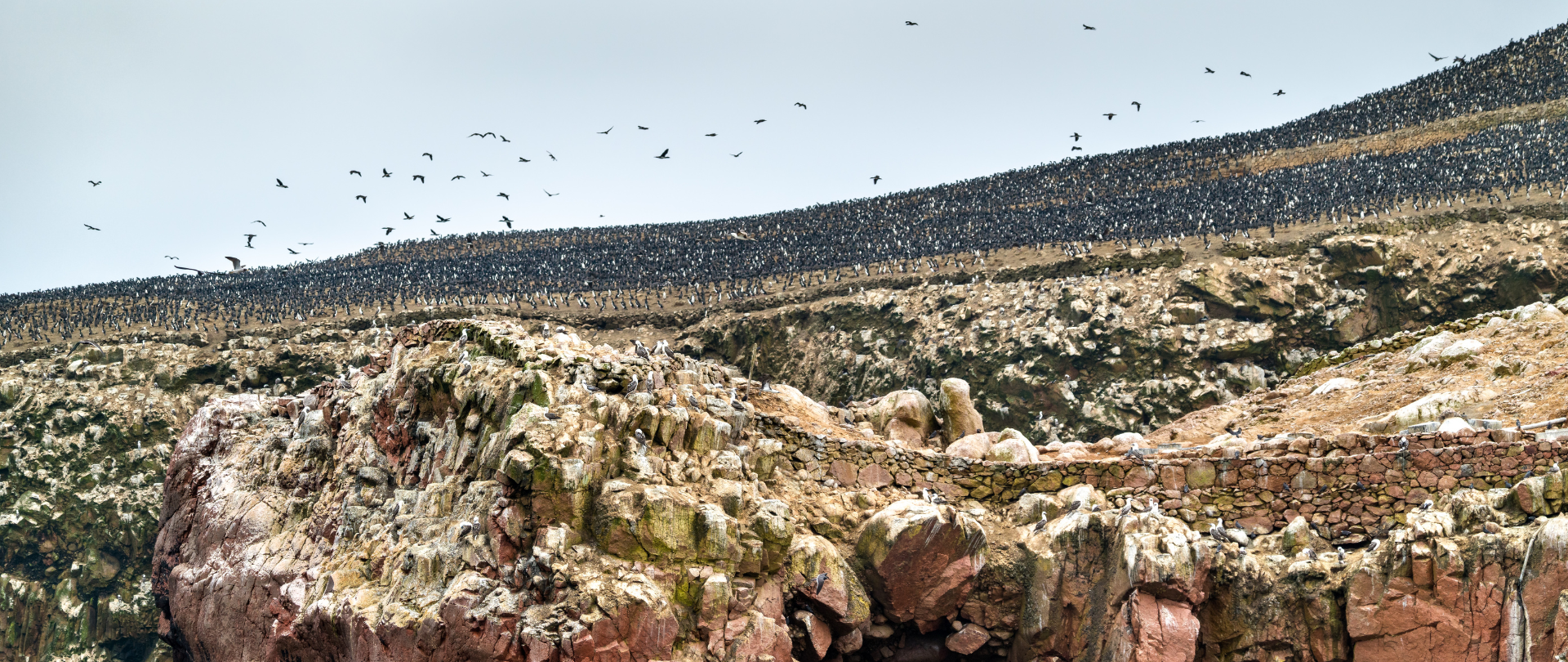
This historic agreement aims to protect the marine and coastal areas of the Southeast Pacific.
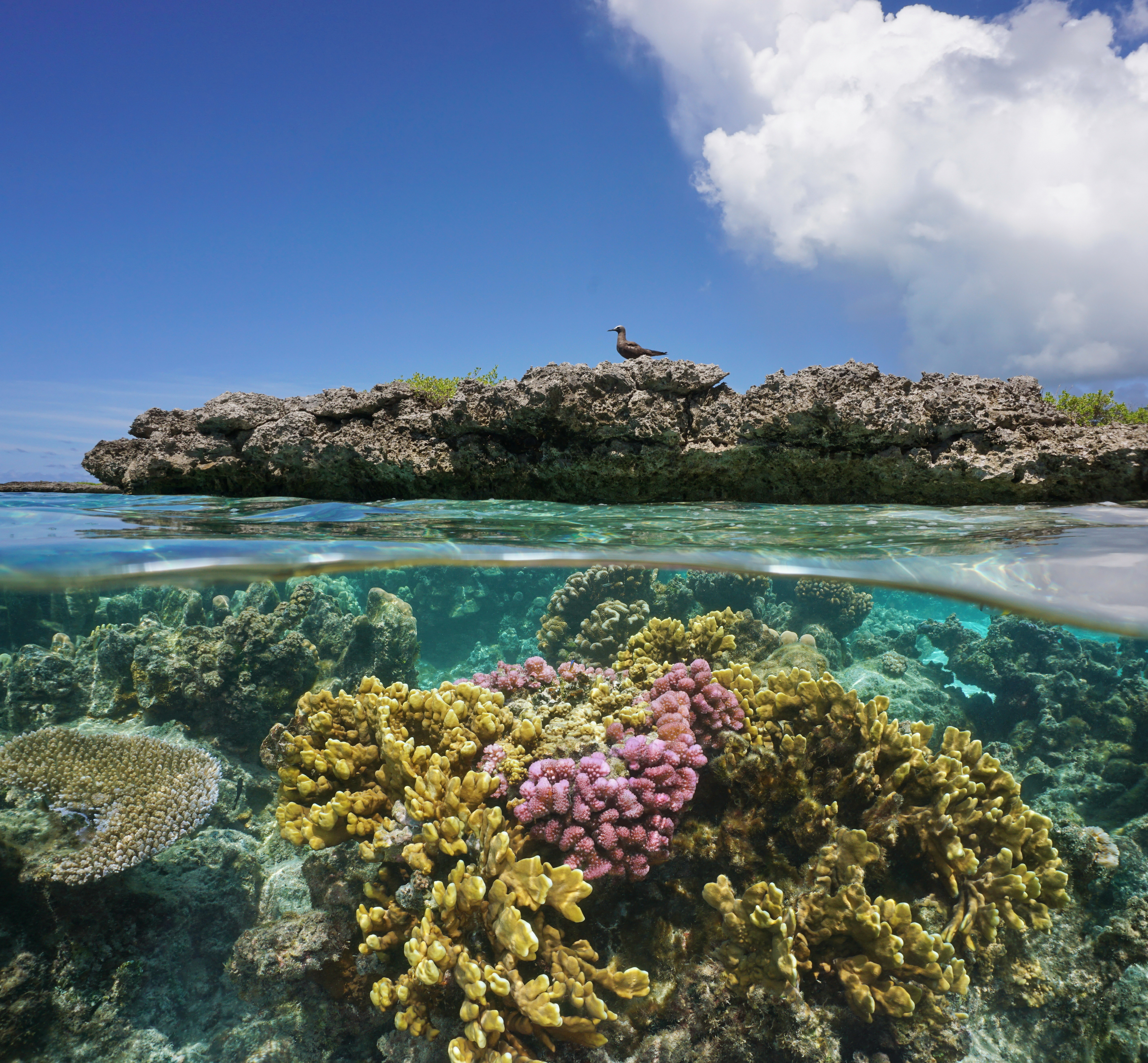
Our projects to restore key islets in Nukufetau Atoll forecast climate resilience and community benefits in Tuvalu!
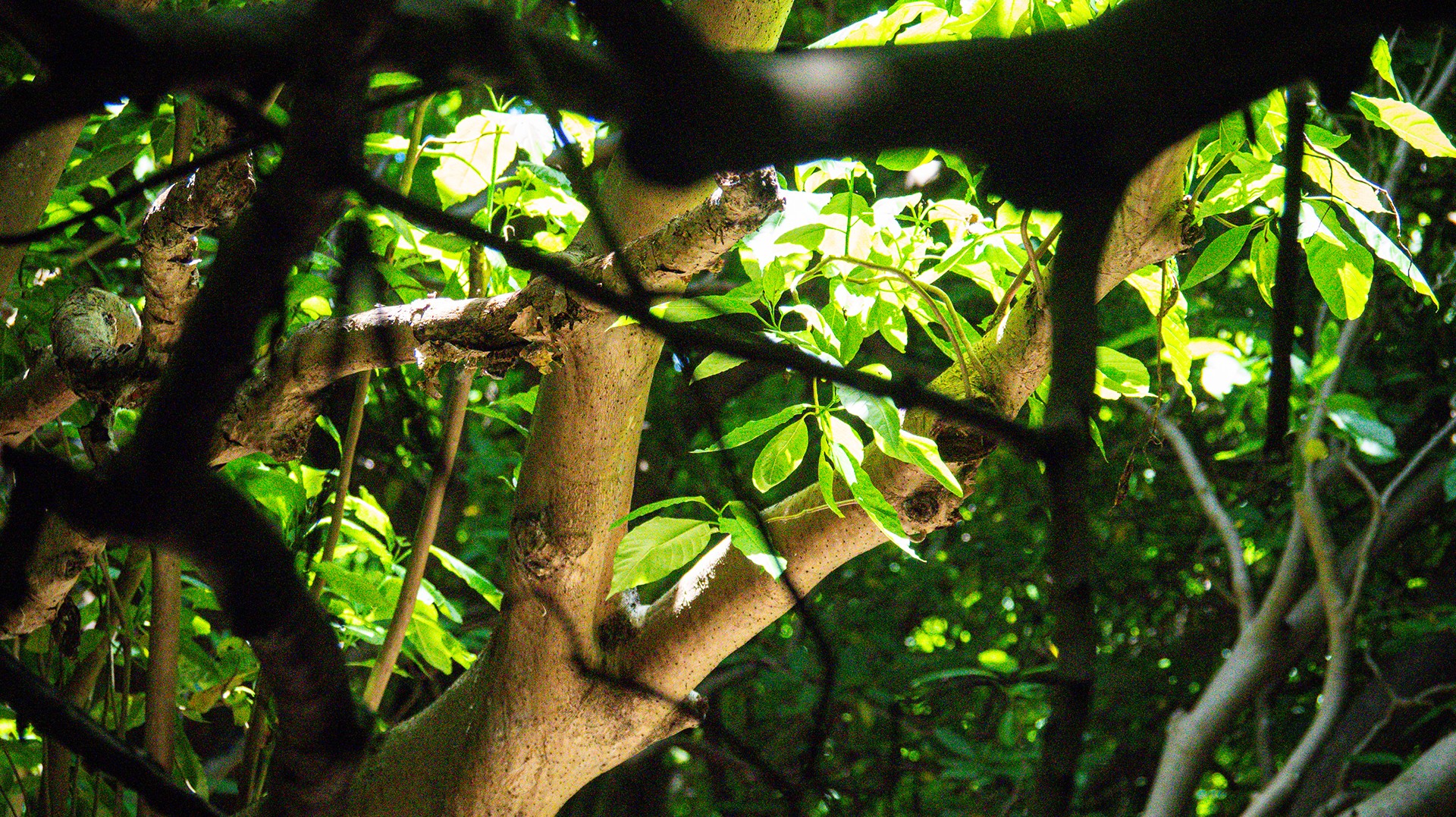
Island Conservation and partners have published a new paper quantifying ecosystem resilience on restored islands!
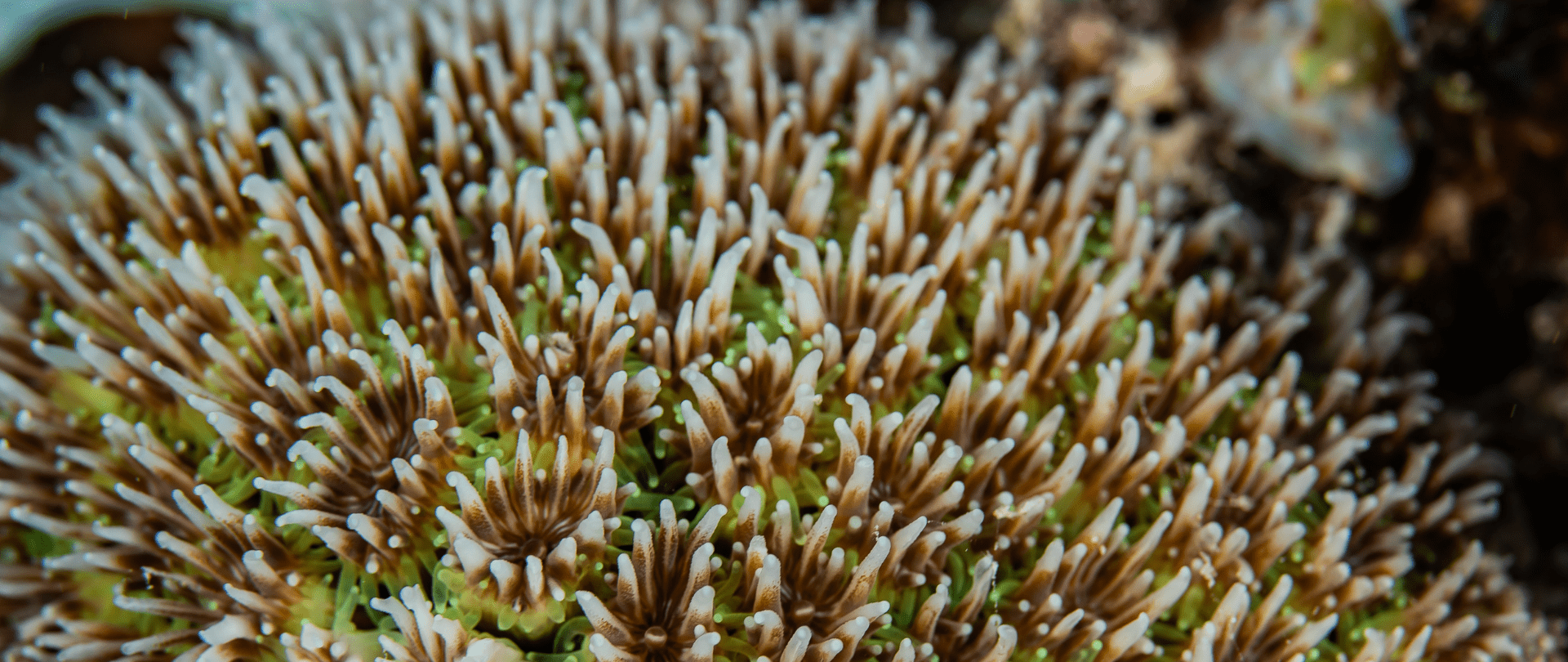
Climate Week NYC: what is it and why is it important? Read on to find out why Island Conservation is attending this amazing event!
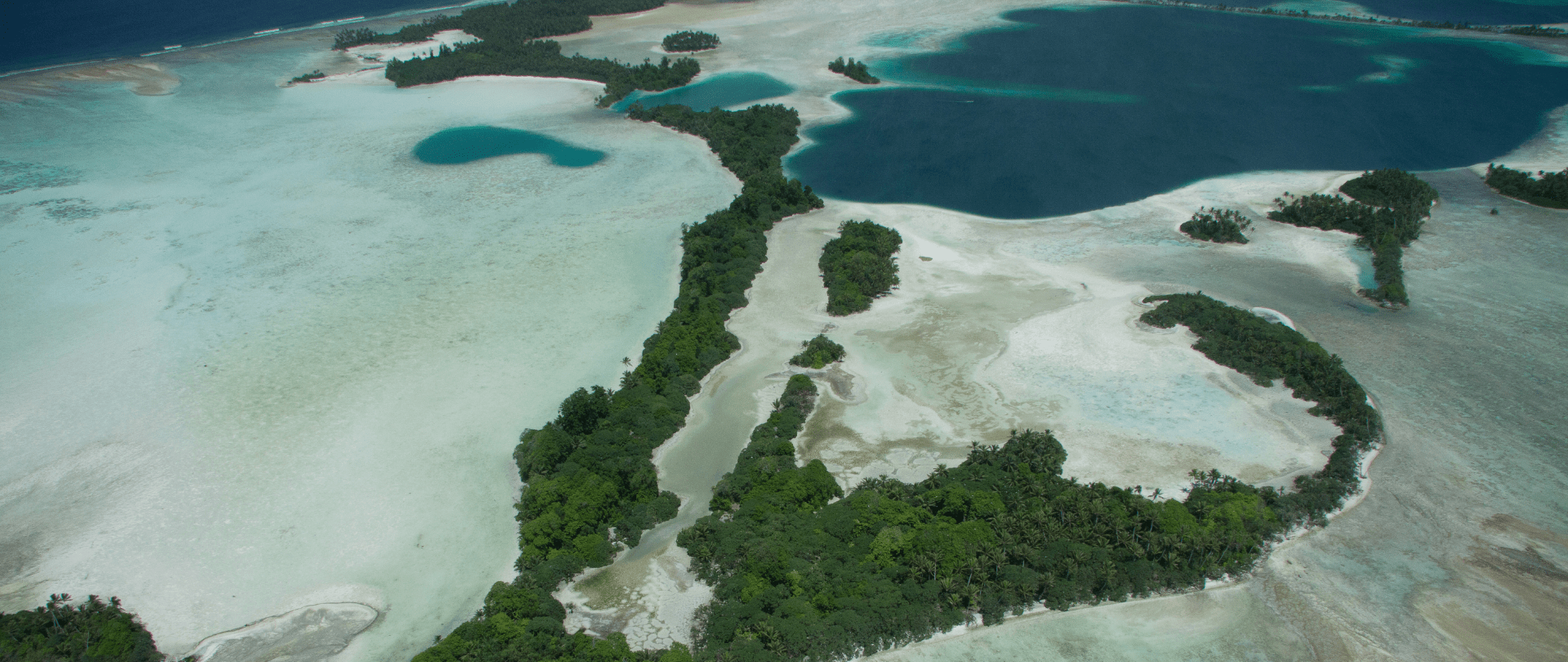
With sea levels on the rise, how are the coastlines of islands transforming? Read on to find out how dynamic islands really are!
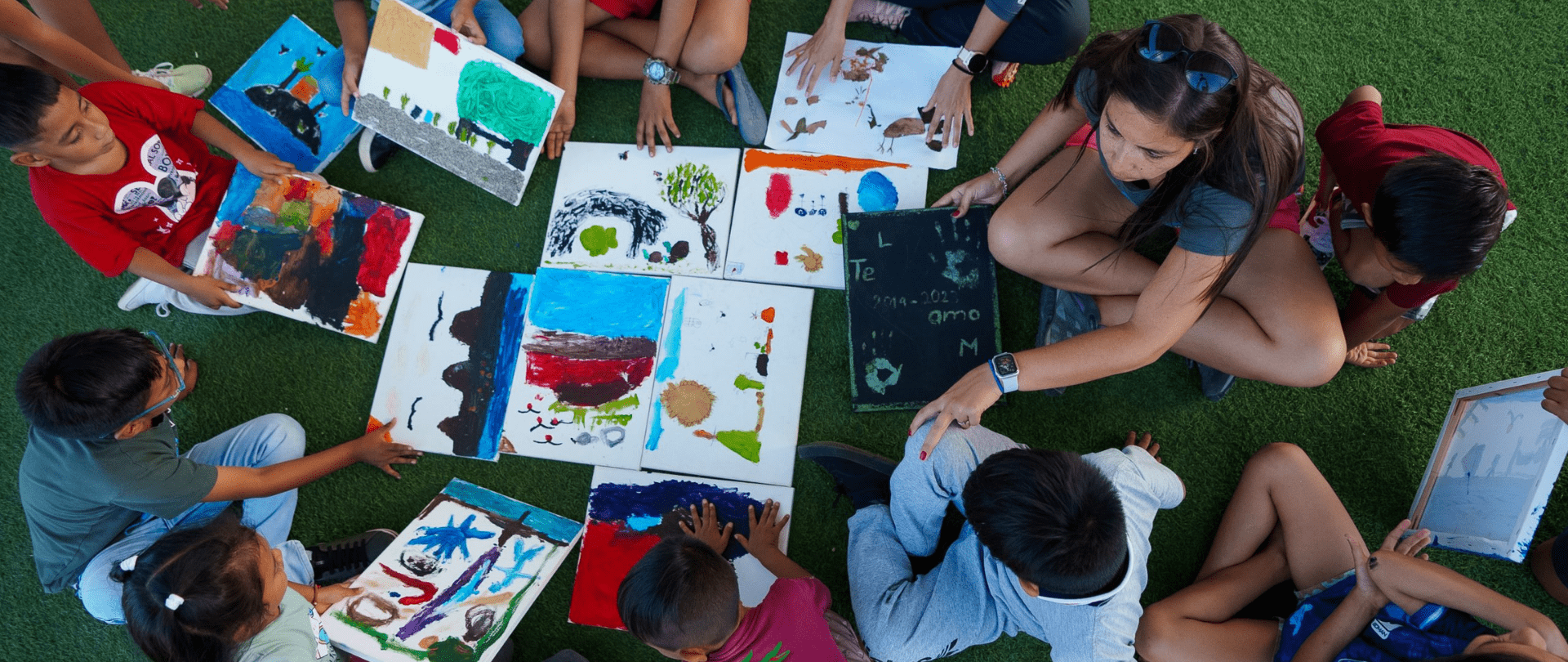
Join us in celebrating the most amazing sights from around the world by checking out these fantastic conservation photos!
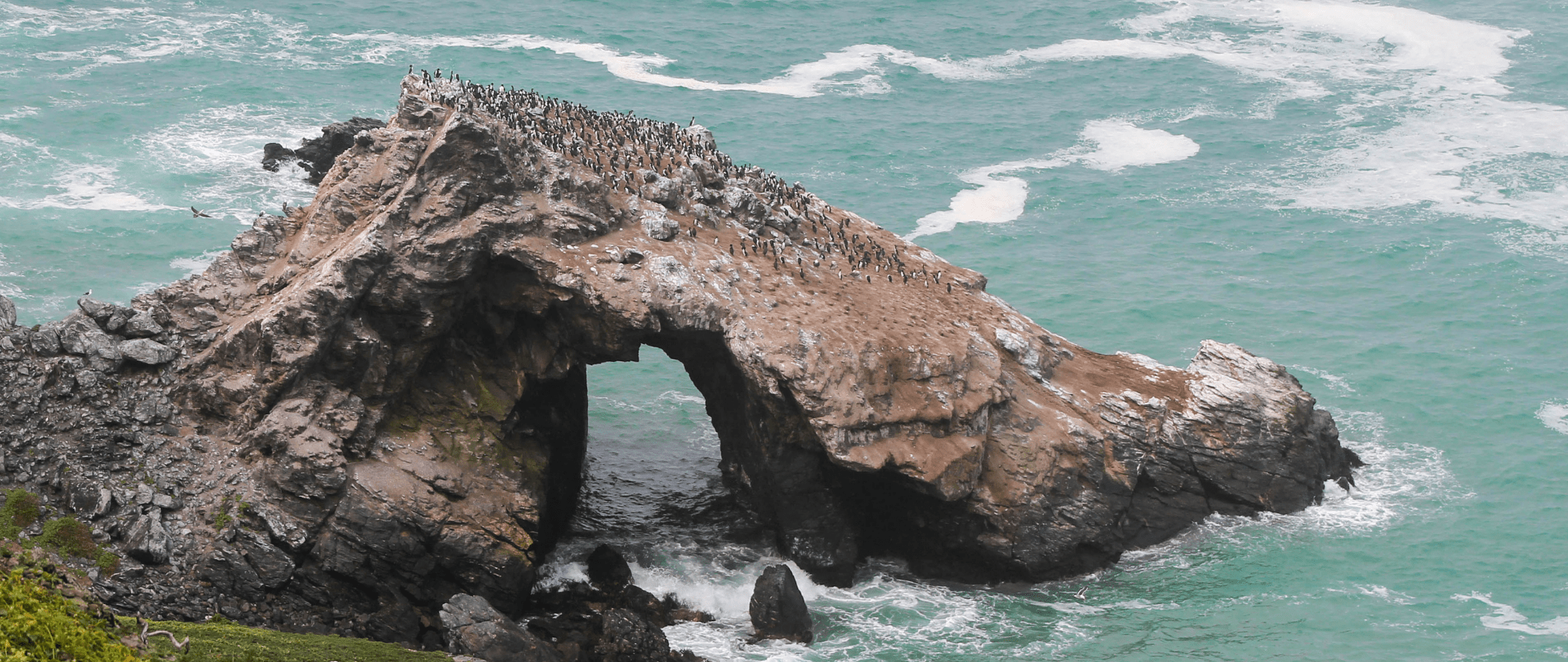
Rare will support the effort to restore island-ocean ecosystems by engaging the Coastal 500 network of local leaders in safeguarding biodiversity (Arlington, VA, USA) Today, international conservation organization Rare announced it has joined the Island-Ocean Connection Challenge (IOCC), a global effort to…